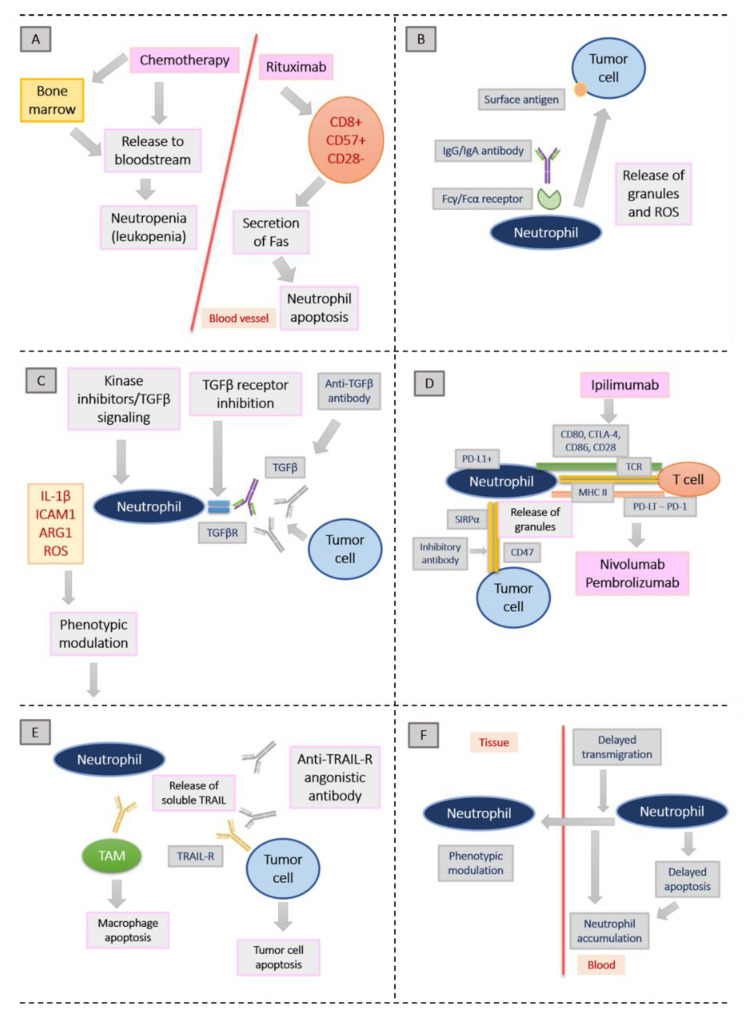Figure 1.
Possible mechanisms by which established anti-tumor treatments might modulate the phenotype and action mode of TANs. Figure adapted from Shaul et al. [56]. (A): Neutropenia is the result from the cytotoxic effect of chemotherapy, impairing bone marrow function and decreasing the amount of white blood cells released to the bloodstream. Fas secretion from T lymphocytes upon chemotherapy may also lead to neutrophil apoptosis. (B): After binding of monoclonal antibodies with an intact Fc domain to tumor cells, cellular toxicity is triggered. Neutrophils release their granules and lead to cancer cell apoptosis. (C): Transforming growth factor-β (TGFβ) signaling inhibition leads to the inhibition of its receptor (TGFβR), which in turn changes neutrophils towards an antitumor phenotype in mice. (D): Tumor immune escape is promoted by the activation of immune checkpoint inhibitors. Among others, cytotoxic T lymphocyte-associated protein 4 (CTLA-4), programmed cell death 1 (PD-1) and CD47 count among these checkpoint inhibitors. (E): Tumor necrosis factor-related apoptosis-inducing ligand (TRAIL) promotes cancer cell death by binding to TRAIL receptors (TRAIL-Rs) on their cell surfaces. Neutrophils are capable of releasing soluble TRAIL. (F): Neutrophils from the bloodstream accumulate as an effect of steroids, because their recruitment to tissues is inhibited. It is assumed that certain steroids may specifically modulate neutrophil phenotypes [56].

